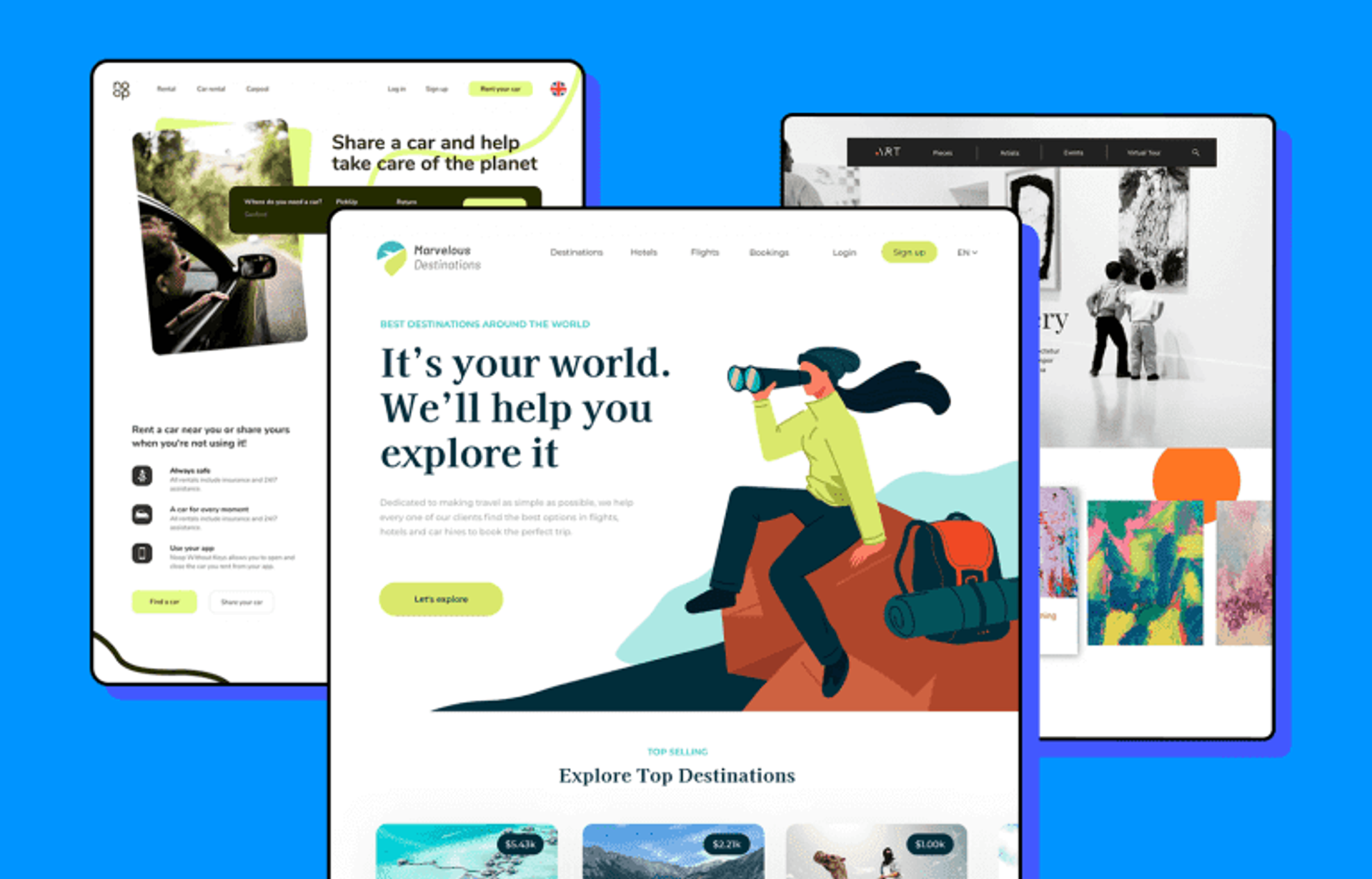Las Vegas SEO Firm Known for Innovative Digital Marketing Strategies
Las Vegas SEO Firm Known for Innovative Digital Marketing Strategies
Blog Article
Boost Your Company With Responsive and User-Friendly Web Design
In an era where electronic interactions dictate customer actions, the relevance of receptive and easy to use web design can not be overemphasized. A well-structured web site not only suits various devices yet likewise enhances the general user experience, promoting greater involvement.
Relevance of Responsive Layout
In today's electronic landscape, a significant bulk of web website traffic originates from mobile phones, underscoring the crucial importance of receptive style. As users progressively access sites through smartphones and tablet computers, companies should guarantee that their online visibility is optimized for various display sizes and resolutions. las vegas web design. Receptive design not just enhances individual experience however also plays an important role in seo (SEARCH ENGINE OPTIMIZATION), as search engines focus on mobile-friendly websites

Along with enhancing customer fulfillment, responsive layout can offer an affordable advantage. In an industry where digital communications are paramount, organizations that focus on responsive website design placement themselves as forward-thinking, enhancing their brand online reputation and ultimately driving conversions.

Crucial Element of User-Friendly Layout
Creating a straightforward design includes several crucial elements that boost usability and make certain a positive interaction with the web site. Simplicity is vital; a tidy, clean design enables individuals to navigate effortlessly. Instinctive navigating is one more important element, enabling individuals to discover info rapidly without confusion. This can be accomplished through clear food selections, rational structuring, and regular placement of navigating switches.
Furthermore, understandable typography plays a considerable role in individual experience. Choosing legible font styles and appropriate dimensions makes sure that users can quickly take in content without stressing their eyes. Efficient use of shade and contrast not only improves visual appeals however also improves readability and availability for individuals with aesthetic problems.
Moreover, including interactive components such as buttons and web links that are plainly specified and effectively spaced encourages individual involvement. Feedback systems, like hover impacts or verification messages, even more improve the interaction by providing individuals with confidence that their actions have been acknowledged.
Last but not least, optimizing load times can dramatically affect customer fulfillment. A fast-loading site minimizes bounce rates and keeps users engaged, ultimately promoting a much more desirable assumption of the brand. By concentrating on these components, organizations can develop an easy to use design that drives success.
Benefits of Mobile Optimization
Mobile optimization is crucial for modern-day web sites, as individuals increasingly rely on their smartphones and tablets for searching. Users can conveniently navigate a mobile-optimized site, which boosts their overall experience and boosts the possibility of engagement.
In addition, mobile optimization can bring about higher online search engine positions. Online search engine like Google prioritize mobile-friendly websites in their formulas, suggesting that services with enhanced sites are most likely to show up in search results page. This exposure can drive much more organic traffic and possible consumers to the organization.
In addition, mobile optimization minimizes bounce prices. When users encounter a website that is hard to browse or slow down to load on their mobile phones, they are most likely to leave and look for alternatives. By supplying a seamless experience, organizations can keep users and transform sees into sales.
Enhancing Individual Experience
A well-optimized site not just accommodates mobile users yet additionally dramatically improves overall individual experience. By including responsive layout try here concepts, organizations can make certain that their web sites are easily accessible throughout various gadgets and display sizes, producing a seamless surfing experience. This adaptability cultivates customer interaction, as visitors are much less most likely to encounter discouraging navigating concerns or distorted web content.
Furthermore, an easy to use user interface simplifies communications, permitting customers to find details or complete purchases with ease. Aspects such as intuitive menus, clear calls-to-action, and visually attractive designs add to a favorable experience, encouraging individuals to invest more time on the website. Quick packing times are another important facet, as slow websites can lead to high bounce rates and discontented clients.
Additionally, boosting user experience involves considering the demands of varied audiences. Executing attributes such as alt text for photos and making certain high comparison between text and you could try here background can make sites extra accessible to people with specials needs. Ultimately, prioritizing customer experience not only pleases existing customers yet also attracts new ones, developing a solid structure for service growth in an increasingly electronic landscape.
Gauging Success and ROI
Gauging success and roi (ROI) Read Full Article in responsive internet design is crucial for recognizing its influence on company performance (las vegas web design). To effectively evaluate the success of a responsive web style initiative, companies must establish key efficiency signs (KPIs) that align with their purposes. Common KPIs include conversion prices, bounce prices, individual interaction metrics, and average session durations
Tracking these metrics through analytics tools enables organizations to examine how well the receptive style satisfies individual needs across tools. A high conversion rate, for instance, indicates that customers are not only visiting the website but are additionally taking desired activities, such as buying or registering for a newsletter.
In addition, it's important to evaluate the cost related to the website design project versus the profits generated post-implementation. This contrast uses a more clear image of ROI. Businesses need to also take into consideration qualitative comments from users, as this can give insights into individual complete satisfaction and locations for enhancement. By continually measuring success and ROI, companies can make enlightened decisions to improve their internet presence, making sure that their receptive design methods produce ideal outcomes and foster long-lasting growth.
Conclusion

Report this page